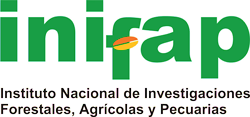Climate change scenarios (CMIP-5) for three protected natural areas in the Transversal Neovolcanic belt
DOI:
https://doi.org/10.29298/rmcf.v9i50.255Keywords:
Climate analysis, increase in temperature, forest ecosystems, future scenarios, GCM, GISAbstract
Due to climate change, precipitation and temperature patterns will cause significant changes in the ecosystems of the world. The tool used to simulate future climate is the Global Circulation Models (GCM), which are used to generate future climate scenarios. The objective of this study was to estimate climate scenarios for 2045-2069 for the Pico de Orizaba natural protected areas (ANP), Nevado de Toluca and Volcán Nevado de Colima. The monthly climatic layers at 1 km2 were used for the present and future of the CRNMCM5 and GDFL_CM3 MCG with a radioactive forcing (RCP) of 4.5 (constant CO2 emissions) and 8.5 (increasing CO2 emissions). The layers were trimmed to the size of the ANP, and the scale was adjusted from 1 km2 to 30 m. The current and future climate was estimated and the differences between the two were calculated. Various climate change scenarios were generated. Results for 2045-2069 indicate a decrease in precipitation between 18 and 52 mm for Pico de Orizaba, 61 to 99 mm for Nevado de Toluca and 27 to 38 mm for Volcán Nevado de Colima; increase in average annual temperature of 1.32 °C to 1.67 °C (Pico de Orizaba), 1.30 °C to 1.76 °C (Nevado de Toluca) and 0.91 °C to 1 °C (Volcán Nevado de Colima). Changes in temperature and precipitation could lead to more frequent forest fires, increased incidence of forest pests and reduced reload of aquifers.
Downloads
Downloads
Published
How to Cite
Issue
Section
License
The authors who publish in Revista Mexicana de Ciencias Forestales accept the following conditions:
In accordance with copyright laws, Revista Mexicana de Ciencias Forestales recognizes and respects the authors’ moral right and ownership of property rights which will be transferred to the journal for dissemination in open access.
All the texts published by Revista Mexicana de Ciencias Forestales –with no exception– are distributed under a Creative Commons License Attribution-NonCommercial 4.0 International (CC BY-NC 4.0), which allows third parties to use the publication as long as the work’s authorship and its first publication in this journal are mentioned
The author(s) can enter into independent and additional contractual agreements for the nonexclusive distribution of the version of the article published in Revista Mexicana de Ciencias Forestales (for example, include it into an institutional repository or publish it in a book) as long as it is clearly and explicitly indicated that the work was published for the first time in Revista Mexicana de Ciencias Forestales.
For all the above, the authors shall send the form of Letter-transfer of Property Rights for the first publication duly filled in and signed by the author(s). This form must be sent as a PDF file to: ciencia.forestal2@inifap.gob.mx
This work is licensed under a Creative Commons Attribution-Noncommercial 4.0 International license.






